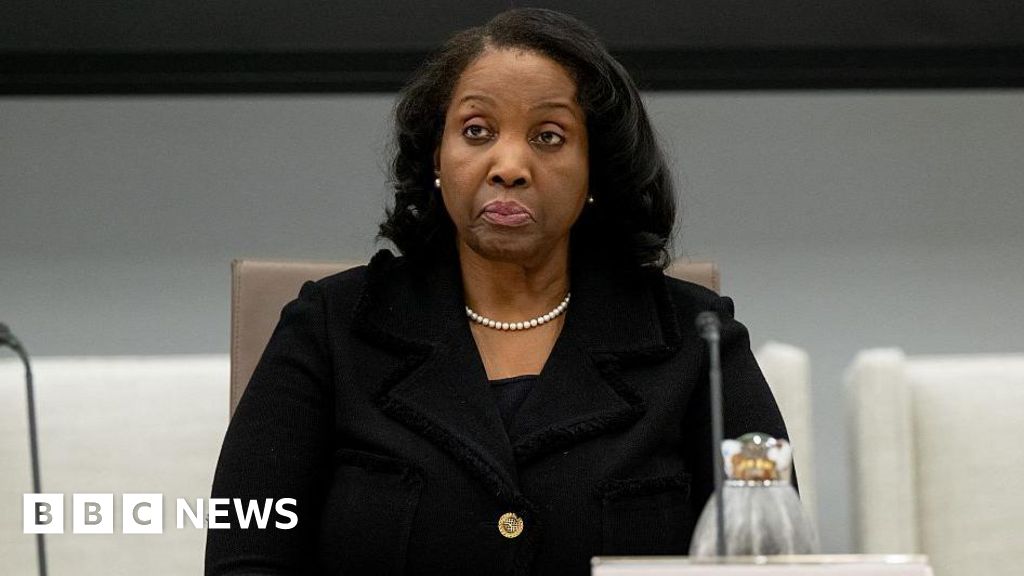The US Supreme Court has ruled Lisa Cook can stay on as a Federal Reserve governor for now, a setback for President Donald Trump in his fight with the central bank.
In an unsigned order, the court turned down Trump’s request to immediately remove Cook and said it would hear arguments over her firing in January.
Trump, who has blasted the Fed for not cutting interest rates as much as he would like, said in August he was removing Cook over claims of mortgage fraud, which she denied.
Cook immediately sued, saying her firing was illegal and opened the door to political interference in the independent Fed. No president has tried to remove a governor before, which can only be done “for cause”.
A federal judge put a stay on her firing as the legal process played out, which the Supreme Court has upheld.
In a statement, Cook’s attorneys said the decision “rightly allows Governor Cook to continue in her role on the Federal Reserve Board, and we look forward to further proceedings consistent with the Court’s order”.
Meanwhile, White House Press Secretary Karoline Leavitt told a news briefing on Wednesday that the Trump administration also looks forward to “that case being fully played out at the Supreme Court”.
Cook is part of the board that sets the Federal Reserve’s benchmark interest rate, and Wednesday’s decision will allow her to vote at least two more times on whether the central bank will continue to cut rates.
Trump has said he is firing her for lying on a mortgage application that she filed before becoming a governor, but Cook, a Biden appointee, contends that he wants her gone because of her stance on the direction the Fed should take in its monetary policy.
By law, a president may remove a Fed governor “for cause”, but that term is not defined and there is no procedure laid out for firing one.
Cook has not been charged with any crime.
Soon after starting his second term, Trump blasted the Federal Reserve for not making deep cuts to interest rates. He has argued that lower rates would help bring down inflation, as well as mortgage rates, and went so far as to float the idea of firing the central bank’s head, Chairman Jerome Powell.
After a strong market reaction, and questions about the legality of removing Powell, Trump backed down from that threat, but has kept up pressure on the central bank.
He has also taken the highly unusual step of appointing the head economic adviser at the White House, Stephen Miran, to temporarily fill a vacancy on the board.
On 17 September, the Fed announced its first rate cut in nearly a year, and many on Wall Street expect it to make more this year.
Powell has said that the cut was made mostly in response to concerns over the job market and not to political pressure, and that the board will rely on data and internal readings of the economy to decide on further reductions. The board will meet at the end of the month and again in December.
The Federal Reserve uses its benchmark rate to carry out its “dual mandate” – helping contain inflation and promoting maximum employment. Mortgage rates are not set by the central bank and are mostly tied to the interest rates of Treasury bonds.
